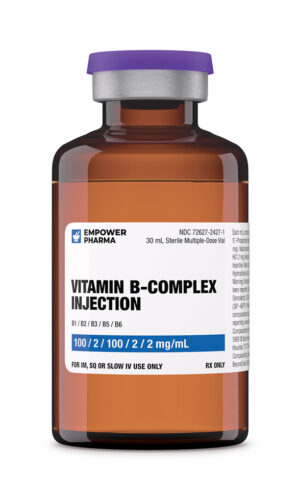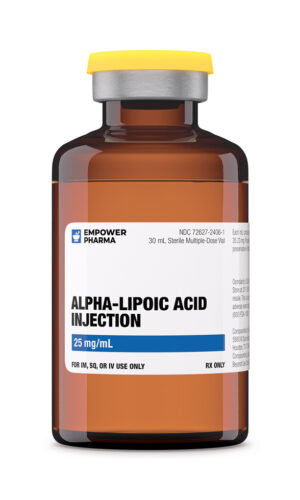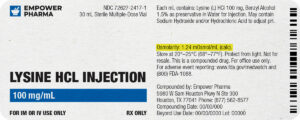


Vitamin B complex is essential for a wide variety of functions in the human body, Its deficiency can also lead to several disorders including chronic neurological ones. Biochemically, different structures are grouped together under B complex on the basis of their natural occurrence in same type of food and solubility in water. Since humans are not able to synthesize vitamins in B complex on their own and these vitamins are easily excreted from the body through urine, their regular intake is essential to maintain energy production, DNA/RNA synthesis/repair, genomic and non-genomic methylation as well as synthesis of numerous neurochemicals and signaling molecules. B complex deficiency is normally caused due to four possible reasons; high consumption of processed and refined food, with lack of dairy and meat-based food in diet, excessive consumption of alcohol, impaired absorption from the gastrointestinal tract or impaired storage and use by liver.D. Kennedy, “B Vitamins and the Brain: Mechanisms, Dose and Efficacy—A Review,” Nutrients, vol. 8, no. 2, p. 68, Jan. 2016.
According to clinical research parenteral administration (intramuscular or intravenous) is preferred over other drug administration routes in case of emergency situations as it provides first-pass metabolism avoidance, reliable therapeutic concentrations and better bioavailability of dosage.J. Zhang, Z. Xie, N. Zhang, and J. Zhong, “Nanosuspension drug delivery system: preparation, characterization, postproduction processing, dosage form, and application,” in Nanostructures for Drug Delivery, Elsevier, 2017, pp. 413–443. It can also be used in situations when oral route is not feasible.
Pharmaceutical Preparation
Each 30 mL vial contains: 100 mg of vitamin B1 in form of thiamine hydrochloride, 2 mg of vitamin B2 in form riboflavin-5-phosphate sodium, 100 mg of B3 in form niacinamide, 2 mg of vitamin B5 in form of dexpanthenol and 2 mg of vitamin B6 in form of pyridoxine hydrochloride.
B vitamins are necessary for the proper functioning of the methylation cycle, DNA synthesis, repair and maintenance of phospholipids and generally essential for healthy skin, muscles, brain, and nerve functionality.K. Mikkelsen and V. Apostolopoulos, “Vitamin B1, B2, B3, B5, and B6 and the Immune System,” in Nutrition and Immunity, Cham: Springer International Publishing, 2019, pp. 115–125. The individual functions are described below but more often than not they work together to achieve the required effect.
Vitamin B1 (Thiamine HCl)
It plays an important role in energy metabolism, immunity boosting and functioning of nervous system. It can help avoid type 2 diabetes, several cardiovascular diseases, some vision and kidney disorders and neurodegenerative diseases like Alzheimer’s disease.
Vitamin B2 (Riboflavin-5-Phosphate Sodium)
It is a powerful antioxidant and plays a vital role in maintaining healthy blood cells and boosts metabolism.
Vitamin B3 (Niacinamide)
Niacin plays a critical role in proper functioning of the nervous and digestive systems. Like other vitamins from the family it is necessary for energy production and metabolism of fatty acids. It also provides healthy skin, nails, and hair.
Vitamin B5 (Dexpanthenol)
Pantothenic acid is essential for healthy development of the central nervous system. It is involved in energy production and through different metabolic and anabolic cycles in development of amino acids, blood cells, vitamin D3 and other fatty acids.
Vitamin B6 (Pyridoxine HCl)
Vitamin B6 has a very influential role in synthesis of neurotransmitters and is essential for good mental health. It also has a direct effect on immune function. It plays a role in metabolism of amino acids and is a necessary co-factor in the folate cycle, lack of which can lead to anaemia.
Epidemiological evidence in some cases hints that the accepted dosages of vitamin B helps only to avoid their marginal deficiency and further benefits could accrue from higher dosages than those provided by RDA.M. S. Morris, “The Role of B Vitamins in Preventing and Treating Cognitive Impairment and Decline,” Adv. Nutr., vol. 3, no. 6, pp. 801–812, Nov. 2012.M. S. Morris, M. F. Picciano, P. F. Jacques, and J. Selhub, “Plasma pyridoxal 5′-phosphate in the US population: the National Health and Nutrition Examination Survey, 2003–2004,” Am. J. Clin. Nutr., vol. 87, no. 5, pp. 1446–1454, May 2008.
Intravenous administration of Vitamin B preparations should be done slowly and if necessary, the preparation should be diluted to avoid speed reaction. The patient should be questioned closely about any symptoms from previous doses to prevent severe reactions. A skin sensitivity test prior to administration is advised. For the older patients (60+ years) specially with arteriosclerosis, possibility of circulatory collapse after administration should be kept in mind.W. R. Chitwood, “ANAPHYLACTIC SHOCK FOLLOWING INTRAVENOUS ADMINISTRATION OF VITAMIN B COMPLEX,” JAMA J. Am. Med. Assoc., vol. 148, no. 6, p. 461, Feb. 1952.
Vitamins from B group are generally recommended during pregnancy and breastfeeding as per individual requirement. These vitamins pass through breast milk to the infant. No specific safety data could be identified. Physician’s advice before use is recommended.
Vitamin B6 has been reported to have an adverse interaction with Vitamin K in presence of folic acid with an increase in INR (International normalized ratio). Some anti-depressants when used vitamin B complex can cause panic which could be a potential effect of these vitamins on central nervous system. When used with oral contraceptives B6 may reduce their effectiveness and cause nausea.A. de Boer, F. van Hunsel, and A. Bast, “Adverse food–drug interactions,” Regul. Toxicol. Pharmacol., vol. 73, no. 3, pp. 859–865, Dec. 2015.
As a co-therapy like in case of combined collagen crosslinking (CXL) and intrastromal corneal ring segment (ICRS) implantation to treat keratoconic eyes, no adverse effect from the riboflavin injections were reported.A. Kılıç, G. Kamburoglu, and A. Akıncı, “Riboflavin injection into the corneal channel for combined collagen crosslinking and intrastromal corneal ring segment implantation,” J. Cataract Refract. Surg., vol. 38, no. 5, pp. 878–883, May 2012.
Anaphylactic shock due to intravenous administration of vitamin B complex has been reported earlier.W. R. Chitwood, “ANAPHYLACTIC SHOCK FOLLOWING INTRAVENOUS ADMINISTRATION OF VITAMIN B COMPLEX,” JAMA J. Am. Med. Assoc., vol. 148, no. 6, p. 461, Feb. 1952.
Thiamine hydrochloride (vitamin B1) in the formulation is known to cause life threatening anaphylaxis especially on multiple administrations if patient is allergic to it. Less threatening reaction to B1 include anxiety, pruritus, respiratory distress, nausea, abdominal pain. Vomiting, anorexia, headache, irritability, tremors, and palpitations, can be overdose syndromes.J. M. Stephen, R. Grant, and C. S. Yeh, “Anaphylaxis from administration of intravenous thiamine,” Am. J. Emerg. Med., vol. 10, no. 1, pp. 61–63, Jan. 1992.K. D. Wrenn, F. Murphy, and C. M. Slovis, “A toxicity study of parenteral thiamine hydrochloride,” Ann. Emerg. Med., vol. 18, no. 8, pp. 867–870, Aug. 1989.
Side effects from vitamin B2 in the preparation are rare but skin test or when necessary the more sensitive intradermal skin test may be advised to diagnose anaphylactic sensitivity.L.-S. Ou, M.-L. Kuo, and J.-L. Huang, “Anaphylaxis to riboflavin (vitamin B2),” Ann. Allergy, Asthma Immunol., vol. 87, no. 5, pp. 430–433, Nov. 2001.
Larger doses of niacin tend to cause nausea and vomiting. In the blood stream as nicotinic acid, it can cause skin flush and this reaction is actually responsible for the tolerable upper limit (UL) for niacin at 35 mg/d for adults in US.J. Kirkland, “Niacin Status, NAD Distribution and ADP-Ribose Metabolism,” Curr. Pharm. Des., vol. 15, no. 1, pp. 3–11, Jan. 2009.
Vitamins B5 and H have reported to cause life-threatening adverse reaction of eosinophilic pleuropericarditis and patient history for such allergy should be checked before administration.P. M. Debourdeau, S. Djezzar, J. L. F. Estival, C. M. Zammit, R. C. Richard, and A. C. Castot, “Life-Threatening Eosinophilic Pleuropericardial Effusion Related to Vitamins B 5 and H,” Ann. Pharmacother., vol. 35, no. 4, pp. 424–426, Apr. 2001.
Prolonged overdose of B6 (150-200 mg/day) over weeks can cause severe sensory-nervous-system dysfunction and ataxia.H. Schaumburg et al., “Sensory Neuropathy from Pyridoxine Abuse,” N. Engl. J. Med., vol. 309, no. 8, pp. 445–448, Aug. 1983. With normal usage serious adverse effects are not reported for pyridoxine (vitamin B6), however, diarrhoea, emesis and rosacea-like dermatitis may be observed in some cases.D. Patel et al., “Vitamins, Amino Acids, and Drugs and Formulations Used in Nutrition,” 2016, pp. 355–364.
Store this medication in a refrigerator at 36°F to 46°F (2°C to 8°C). Keep all medicines out of the reach of children. Throw away any unused medicine after the beyond-use date. Do not flush unused medications or pour down a sink or drain.







